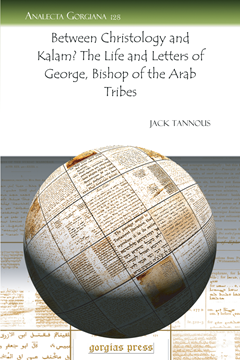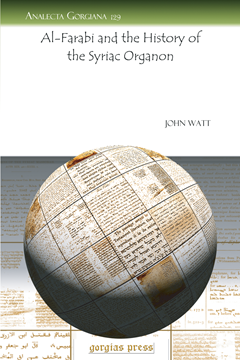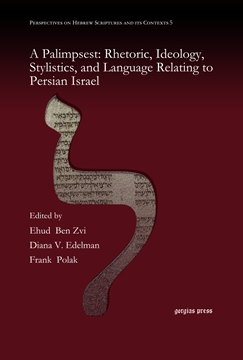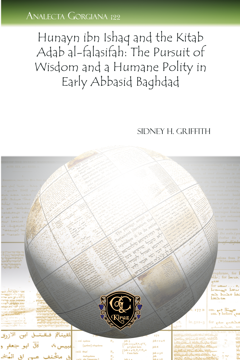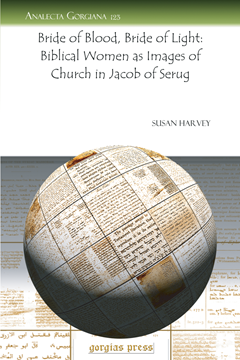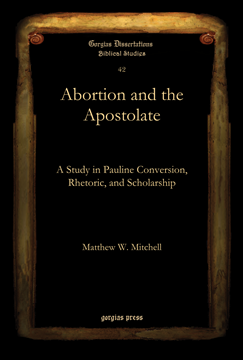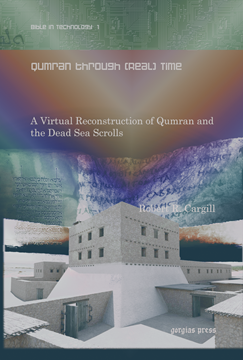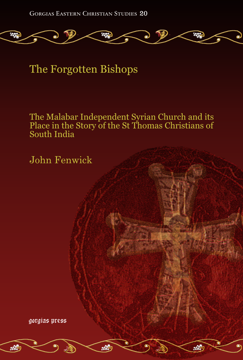Between Christology and Kalām? The Life and Letters of George, Bishop of the Arab Tribes
By Jack Tannous
Series: Analecta Gorgiana 128
ISBN: 978-1-60724-040-2
A translator of Aristotle and friend of Jacob of Edessa and Athanasios of Balad, George, Bishop of the Arab Tribes (d. AD 724) was an important figure in the history of the life and thought of the Syrian Orthodox Church. This article offers a study of the first three of George’s eleven extant letters and relates them to the larger Christian and Islamic context of his day. It will be of interest to students of Greek patristics, Syriac Christianity, and early Islamic history.
$41.00 (USD) $24.60 (USD)
Al-Farabi and the History of the Syriac Organon
By John Watt
Series: Analecta Gorgiana 129
ISBN: 978-1-60724-041-9
Scholarly study of the transmission of Aristotelian philosophy from Greek late antiquity to medieval Islam is to some extent still influenced by the account in Ibn Abī Uṣaibi‛a attributed to al-Fārābī, which served as the basis for Max Meyerhof’s famous essay Von Alexandrien nach Bagdad. The present work, utilising evidence unknown to Meyerhof and still often neglected in more recent scholarship, argues that such a restriction never represented the whole Syriac tradition, but reflects an alternative logical curriculum with deep roots in the ancient world, while Syriac writers who were proficient in Greek adhered throughout to the other strand of this two-strand tradition, that of the full Organon.
$37.00 (USD) $22.20 (USD)
Rhetoric, Ideology, Stylistics, and Language Relating to Persian Israel
ISBN: 978-1-60724-584-1
A volume of collected essays that explores what we can learn about the producers and readers of biblical books by looking into matters of language, rhetoric, style, and ideology. What do they teach us about these literati’s world of knowledge and imagination, about the issues they had in mind and the ways they came to deal with them through authoritative literature? The book includes essays on such issues as whether linguistic theories can solve literary-critical problems, on what is “late biblical Hebrew,” on parallelism and noun groups in biblical poetry, and the communicative meaning of some linguistic choices.
$197.00 (USD) $118.20 (USD)
Hunayn ibn Ishaq and the Kitab Adab al-falasifah
The Pursuit of Wisdom and a Humane Polity in Early Abbasid Baghdad
Series: Analecta Gorgiana 122
ISBN: 978-1-60724-043-3
With a focus on the Kitāb Ādāb al-falāsifah, a book of aphorisms attributed to Ḥunayn ibn Isḥāq, some of the important aspects of the Kitāb are laid out, particularly those dealing with religion and the pursuit of philosophy. Although putatively, translators and scholars such as Ḥunayn ibn Isḥāq, opened the way for philosophical dialogue between Muslims and Christians of Orthodox churches on precepts, often based on Aristotle, which they could agree would lead to wisdom and a humane society.
$36.00 (USD) $21.60 (USD)
Biblical Women as Images of Church in Jacob of Serug
Series: Analecta Gorgiana 123
ISBN: 978-1-60724-050-1
This study seeks to address the common bridal imagery pervasive in ancient Syriac Christianity by asking how Jacob of Serug employed the presentation of biblical women in his homilies to serve as imagery for the Church.
$37.00 (USD) $22.20 (USD)
East and West
Essays on Byzantine and Arab Worlds in the Middle Ages
Series: Gorgias Eastern Christian Studies 15
ISBN: 978-1-60724-056-3
Twenty-four contributions on matters dealing with Byzantine and Oriental lands, people, and cultures through different perspectives, including history, maritime trade, documents, travelers, and art. These essays trace the history of the relations between the Greeks and the peoples of the Middle East from Late Antiquity up to the seventeenth century.
$202.00 (USD) $121.20 (USD)
Abortion and the Apostolate
A Study in Pauline Conversion, Rhetoric, and Scholarship
Series: Gorgias Biblical Studies 42
ISBN: 978-1-60724-057-0
This book argues that it is the rejection of Paul’s claims to be an apostle in the same sense as the other apostles that ultimately underlies his “mission to the Gentiles.” This argument is advanced through a careful analysis of Paul’s references to his “conversion” in Galatians 1:15-17 and 1 Corinthians 15:8, paying particular attention to Paul’s evocative use of the language of abortion. The contextualization of this curious self-description in 1 Corinthians 15:8 draws upon a growing body of work concerning an area of ancient life that continues to fascinate and perplex moderns; the exposure of unwanted infants.
$148.00 (USD) $88.80 (USD)
Qumran through (Real) Time
A Virtual Reconstruction of Qumran and the Dead Sea Scrolls
ISBN: 978-1-60724-058-7
This book proposes a new occupation model for the remains of Khirbet Qumran, the site associated with the discovery of the Dead Sea Scrolls. Using the latest in virtual reality technology, the author reconstructs the site of Qumran and demonstrates that the site was initially built as a Hasmonean fortress, and was later expanded into a residence for a self-sufficient community responsible for the Dead Sea Scrolls.
$171.00 (USD) $102.60 (USD)
Yours, Mine, or Theirs? Historical Observations on the Use, Collection and Sharing of Manuscripts in
Series: Analecta Gorgiana 126
ISBN: 978-1-60724-059-4
In the west centuries ago manuscripts were replaced by printed books, and relegated to mostly secular libraries as a result of religious and political upheavals. In the Christian Orient such changes were slower and remain less advanced. Manuscripts have not entirely vanished from regular use, and Christian communities retain ownership of significant collections of their historic manuscripts. The vital connection between manuscripts and religious culture endures, even if attenuated by persecution, diaspora, technology, and other aspects of modernity. This essay provides an historical survey of these issues in both Europe and the Christian Orient (limited here to the Middle East, the Caucasus, and Ethiopia/Eritrea).
$36.00 (USD) $21.60 (USD)
The Forgotten Bishops
The Malabar Independent Syrian Church and its Place in the Story of the St Thomas Christians of South India
By John Fenwick
Series: Gorgias Eastern Christian Studies 20
ISBN: 978-1-60724-619-0
The Malabar Independent Syrian Church is the smallest of the jurisdictions into which the St Thomas Christian community is divided today. It has, however, played a crucial role in the development of the Syrian Churches, whose stories can not be told without it. The present work shows how the bishops of this tiny, one-Diocese Church, now largely forgotten, once stood at the centre of the events that shaped the present ecclesiastical situation.
$257.00 (USD) $154.20 (USD)
